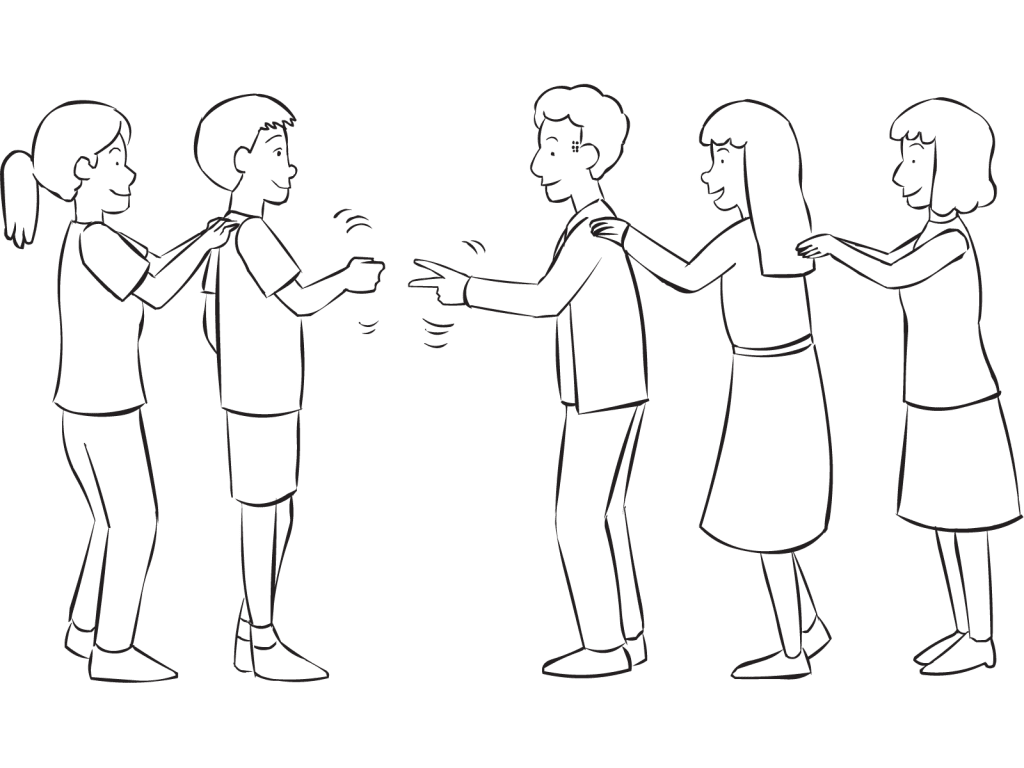Save to Playlist
Step-by-Step Instructions
Video Tutorial Premium
How To Play Narrative Premium
Practical Leadership Tips Premium
Social-Emotional Learning Premium
Health & Wellness Programming Premium
Popular Variations Premium
You Might Also Like... Premium
Useful Framing Ideas Premium
Reflection Tips & Strategies Premium
Program Templates Premium
Source Premium

No Props No Problem
Brand NEW book featuring 150+ outrageously fun group games & activities. Scan QR codes to connect to tons of digital content including video tutorials.
Add to Cart
NEW – No Props No Problem
The best-selling book featuring 150+ outrageously fun group games & activities. Scan QR codes to access exclusive digital content including video tutorials.

Free Ice-Breakers & Group Games
Ten of the best no-prop, interactive ‘get-to-know-you’ games & activities. 100% fun, your group will love ’em. Our most successful giveaway, 10,000+ downloads so far…
Top Ten Icebreakers & Group Games
Download our free 28-page ebook jam-packed with outrageously fun activity ideas.
Just one more question:
I am interested in…
Choose a plan that’s right for you
We offer a range of membership plans with no surprises.
Click an option below & discover our simple pricing.

Individual
Click here if you’re a:
- Teacher
- Corporate trainer
- Outdoor educator
- Camp leader
- Youth leader
- Conference organiser
- Therapist/counsellor
Membership Plans

Enterprise
Click here if you represent a:
- School
- Corporation
- Community-based Organisation
Explore plans for
10, 50, 200 or more
potential users
Membership Plans






When I was a kid, my cousin taught me how to play the card game “war.” For those who aren’t familiar, you split a standard playing card deck between the players so they are evenly split, or close to. when ready to play, you count, “1,2,3 throw,” and you both flip the top card on your pile over without looking at it. The higher card wins, and the lower card goes to the “winner.” i love using this game for this version of Ro Sham Bo (more the conga or cheer squad, though!).
for groups, everyone gets 1 card, and doesn’t look at it. When play starts, they will go find a partner and “1,2,3, throw!” and show their cards. The higher card wins, the “winner” takes the other person’s card, and the other person joins the cheer squad of that person. Now this “winner” has 2 cards, and finds and faces another player, adding to their card collection and cheering section when they win, or giving over their collection of cards and joining a cheer team if they don’t. and that is just round 1!!
The way my cousins played “war” was not the same as when I played with other kids. With my cousins, if the cards showing were the same suit, the LOWER card would be the winner! The 5 and the 2 of hearts? The two of hearts wins! The king and the queen of spades? the Queen wins. This is round 2.
What tends to be the show topper, though, is proposing all this as a math problem! on this third round, the two participants facing each other will “throw” their cards, and the first person to add (subtract, multiply, divide, figure out if the sum is prime, etc) the numbers together and announce them out loud becomes the winner. This tends to bring a lot more focus from the cheer squads who are trying to add up the cards as well, and cheer really hard when their team gets it out first.
usually in case of a tie, I just tell folks to move on to a different person, but often times I find if they have enough cards they will move into the traditional Card Off as permitted by the original game. you would need at least 4 additional cards in hand to perform this option so it often shows up in the middle of a round.
as a note, I usually will ask participants when the deck in their hand is growing larger, to shuffle their cards as they move on to challenge another player.
Thanks for sharing this playing card-based variation Floyd, I’m sure many others will enjoy it too.
Great activity, some may also know this as “Rock, Paper, Scissors, Cheerleader” again lots of energy and everyone can continue to participate. Be aware of the quieter participants who might not be to comfortable with the volume that can result from the activity.
You make a good point re being sensitive to the need of different participants. As discussed throughout playmeo, our recommended approach is to adopt a sequential framework that builds and strengthens one’s Comfort zone before inviting them to ‘stretch’ a little.